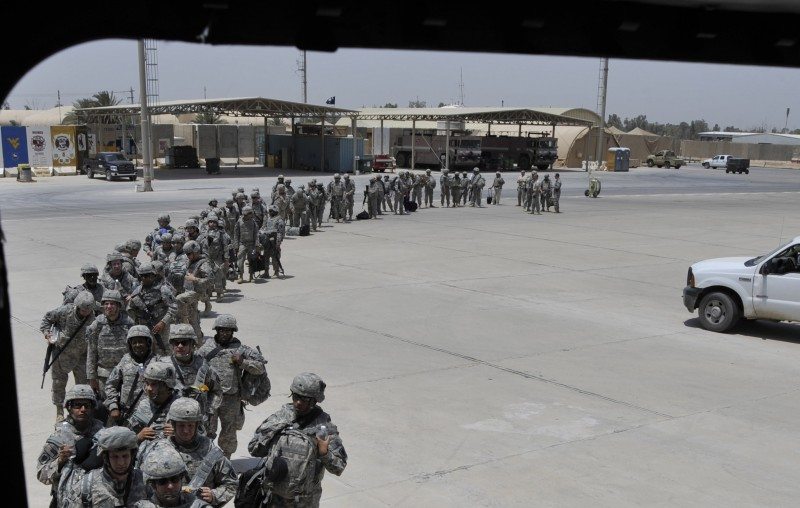Iraq will assume command Friday of the last US military base in the country, a day after US forces formally marked the end of their mission by bringing a divisive war to a low-key conclusion.
Baghdad’s security forces will take over a sprawling installation on the outskirts of the southern city of Nasiriyah, a senior Iraqi official said, a final step ahead of a complete American withdrawal from Iraq in the coming days.
On Thursday, US Defence Secretary Leon Panetta and top US military officers took part in a subdued “casing of the colours” ceremony near Baghdad airport, the first site US forces occupied in Baghdad in 2003.
All that remains of the American military in Iraq are around 4,000 soldiers, down from a peak of nearly 170,000 troops on 505 bases across the country. After year-end, the US embassy will retain just 157 US soldiers, for training of Iraqi forces, and a group of marines to secure the diplomatic mission.
The withdrawal ends a war that left tens of thousands of Iraqis and nearly 4,500 American soldiers dead, many more wounded, and 1.75 million Iraqis displaced, after the US-led invasion unleashed brutal sectarian fighting.
Friday’s handover of the Imam Ali Base, which the US military refers to as Adder, will be the last such transfer ahead of the withdrawal, according to Hussein al-Assadi, the Iraqi official responsible for base transfers.
“It is the greatest day after nine years of occupation and it will be a day for national unity,” he said.
The base lies on the edge of the ancient city of Ur, the Biblical birthplace of Abraham.
The pullout brings to an end nearly nine years of US military involvement in Iraq that began with a “shock and awe” campaign in 2003 to oust Saddam Hussein, which many in Washington believed would see US forces conclude their mission in Iraq within months.
But key decisions taken at the time have since been widely criticised as fuelling what became a bloody Sunni Arab insurgency, in particular dissolving the Iraqi army and purging the civil service of all members of Saddam’s Baath Party, including lower-echelon members.
The insurgency eventually sparked communal bloodshed, particularly after the February 2006 bombing of a Shiite shrine in the predominantly Sunni city of Samarra by Al-Qaeda.
More than 100,000 Iraqis have been reported killed since the invasion, according to British NGO Iraq Body Count.
The bloodshed was only quelled when then-president George W. Bush ordered a “surge” of American troops to Iraq, and Sunni tribal militias sided with US forces against Al-Qaeda.
“After a lot of blood spilled by Iraqis and Americans, the mission of an Iraq that could govern itself has become real,” Panetta said at the symbolic flag-lowering ceremony on Thursday.
“Iraq will be tested in the days ahead — by terrorism and by those who would seek to divide it, by economic and social issues, by the demands of democracy itself,” he added.
But the US “will stand by the Iraqi people as they navigate those challenges”, he said, describing the pullout as “nothing short of miraculous”.
Attacks remain common, but violence in Iraq has declined significantly since its peak.
Iraq has a 900,000-strong security force that many believe, while capable of maintaining internal security, is unable to defend its borders, air space and maritime territory.
Some US observers also fear a return to bloody sectarianism, doubt the strength of Iraq’s political structures, and feel that Prime Minister Nuri al-Maliki, who hails from the Shiite majority, has entrenched his power base to the detriment of the country’s minorities.
Thursday’s ceremony comes a day after US President Barack Obama honoured America’s “bleeding and building” in Iraq, hailing the “extraordinary achievement” of a war he once branded “dumb.”










